No products in the cart.
Unlike other deities in Hinduism lord Shiva is not worshiped as an idol. Shiva is worshipped in the form of a linga across the Hindu society. The linga many consider it to be a representation of the male and female union. The dynamic cosmic energy that is shakthi and the static life that is Shiva.
Lord Shiva’s First Manifestation as the Linga
There is an interesting background story about why we celebrate Maha Shivaratri. Brahma and Vishnu were having a quarrel as to who is more powerful. Predicting that this fight could turn disastrous for the world other gods asked lord Shiva to mediate between them. Lord Shiva 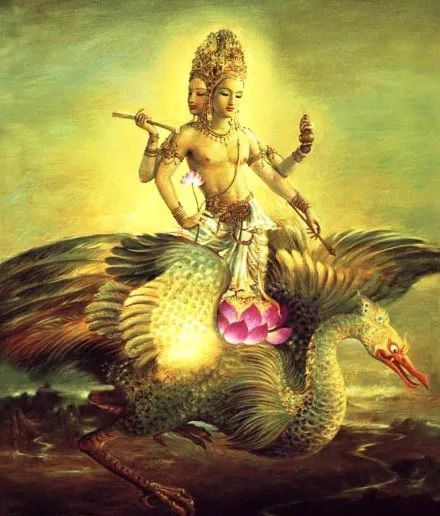 therefore appeared between them assuming the form of a Lingam and challenged the quarreling Gods to find the Aadhi (Beginning) and the Antha (End) of it. The linga stretched across all the three worlds. Lord Brahma took the form of a swan and flew skyward; and Lord Vishnu took the form of a boar and headed to the land. After days of travelling they both couldn’t still locate the ends.
therefore appeared between them assuming the form of a Lingam and challenged the quarreling Gods to find the Aadhi (Beginning) and the Antha (End) of it. The linga stretched across all the three worlds. Lord Brahma took the form of a swan and flew skyward; and Lord Vishnu took the form of a boar and headed to the land. After days of travelling they both couldn’t still locate the ends.
Brahma came across a Ketaki flower on his way, he made the Ketaki flower to lie that Lord Brahma had seen the top of the cosmic column where the flower had previously resided. The ketaki flower claimed Brahma’s victory to Vishnu. At that moment, the central part of the column split open and Lord Shiva revealed himself. Enraged by Brahma’s false claim, he cursed that he will have no temples and therefore, he will not be worshiped He also punished the Ketaki flower by declaring it to be unfit as an offering for worship. Till today there are no separate temples for Lord Brahma and also the ketaki flower is never used for any kind of puja. Since it was on the 14th day in the dark fortnight of the month of Phalguna that Shiva first manifested himself in the form of a Linga, the day is extremely auspicious and is celebrated as Mahashivaratri – the grand night of Shiva.
3 Steps to Worship Lord Shiva
In the Sivapurana it has been told that once Sanatkumara was traveling in an aircraft and happened to see sage Parasara in the state of meditation. Sanatkumara stopped by and asked the latter the reason for being at such a lonely place. He said that he was in search of moksha or salvation. Sanatkumara then revealed to him the knowledge he received earlier from Nandikeswara (the bull that is Shiva’s loyal companion) and suggested him to practice mananam, sravanam and kirtanam to get closer to the divine force that is lord Shiva
- Mananam: Uttering the Siva mantras or prayers, contemplating or meditating upon the grandeur and significance of Siva or the sacred texts of Saivism and performing similar mental activities.
- Sravanam: Listening from others, or in a gathering of Siva’s devotees, about Lord Siva, the concepts of Saivism, the books on Saivism, the life and activities of Nayanars or other devotees of Siva.
- Kirtanam. Singing the glory of Lord Siva either alone or in the company of other devotees. When it is done in groups it is called bhajan. Devotional singing helps the mind become stabilized in God.
According to the Sivapurana, in this kaliyuga,worship of Siva in the form of Sivalinga is the best means of liberation. Siva is bothe saguna ( having a definite form) and nirguna ( without definite form). According to saivites, nirguna worship is the highest form of spiritual oneness a person can achieve.
How to Worship Lord Shiva?
There are few things one should keep in mind while worshipping lord Shiva:-
Generally worshippers in a Shiva temple do not sit such that the deity’s frequencies directly fall on their bodies because this can be distressing. There is generally a tortoise built in the front of the temple. No one sits in between the deity’s idol and the tortoise, thus automatically no one sits exactly opposite the deity.
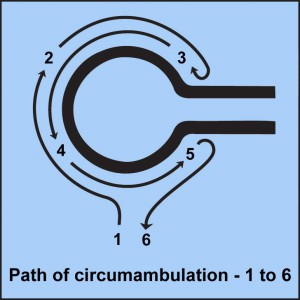
When circumambulating one should begin on the left hand side and continue till the channel of the shalunka from where the water offered during the ritualistic bathing (abhishek) flows. Without crossing it one should complete a circumambulation by moving in the reverse direction upto the other side of the channel (srot).
Tulsi (basil) leaves are not offered to Lord Shiva. However tulsi leaves offered to an idol of Lord Vishnu may be offered as Shiva is a devotee of Vishnu and He loves tulsi offered to Lord Vishnu.
Lord Shiva loves being worshipped with liquids. The linga is constantly kept wet by sprinkling liquids .Shiva is offerred abhishek by reciting a hymn from the Yajurveda called Panchakshara Mantra, Lord Shiva’s five lettered mantra. When it is prefixed with the syllable Om, it becomes Om namah Shivaya
n (न) = The foremost deity of all the regions
m (म) = The bestower of supreme spiritual knowledge
and destroyer of the greatest sins
Shi (शि) = Benevolent, serene and responsible for the
initiation by Lord Shiva
va (वा) = The representation of a bull as the vehicle and
the Vasuki and Vamangi Energies
y (य) = The auspicious abode of Supreme Bliss and
Lord Shiva.
The frequencies created from chanting Om generate a lot of energy (heat) in the body. in case of women this heat can affect the reproductive organs. They may experience distress. They may suffer from excessive menstrual flow, amenorrhoea, dysmenorrhoea, infertility, etc. Hence, it is advisable for women not to prefix Om to the Name unless otherwise recommended by the Guru; for example they may chant ‘namaha Shivaya’ instead of Om namah Shivaya. Otherwise they should use Shri as a prefix.
Shiva Gayatri Mantra
Similar to the Gaytri mantra that we recite, there is a gayatri mantra fixated on lord Shiva that is said to have a very powerful impact on the human mind.
तत्पुरुषाय विद्महे । महादेवाय धीमहि । तन्नो रुद्र: प्रचोदयात् ।।
Meaning: We are quite familiar with that Supreme Being (Mahadev). We meditate on that Mahadev. May that Rudra inspire our intellect benevolently.
Once Dhevas and Asuras churned the ocean to get the nectar of eternallife amrutha. a terrible poison Halahalam came up. They all begged lord Shiva to help them who drank the poison completely. Then they resumed their effort to get Amrutham. They got it on Dhwadhasi (twelfth moon day). Without praying and thanking the God, by whom they got Amrutham, Devas started dancing and celebrating their victory.
On thrayodhasi (thirteenth moon day) they realized their sin of not praying the God and pleaded for forgiveness. The pleased Lord Shiva forgave them and danced between the horns of the Nandi, the vehicle of Lord Shiva. That time is called Pradhosham. Whoever prays Lord Shiva during that time, Lord Shiva fulfills their wishes and gives them mukti.
Mahashivaratri – A Special Festival for Hindus
Mahashivarathri is one of the greatest festivals in our country celebrated in praise of lord Shiva. Devotees of Lord Shiva observe the Shivaratri Festival by following the prescribed rituals all through the day; devotees abstain from eating food and break their fast only the next morning, after the nightlong worship. They strongly believe that ritual worship of Lord Shiva on the auspicious day of Shivaratri absolves them of past sins and they are blessed with Moksha.
As a tradition devotees wake up early in the morning of the Mahashivratri day and take a ritual sunrise bath. Prayers are offered to sun god Vishnu and Shiva which is observed in all Hindu festivals. According to Shiva Purana, every three hours, Shiva lingam is given a special bath with milk, yoghurt, honey, sandalwood paste and rose water. Puja, meditation and chanting of Om Namah Shivaya accompany the ritual bath. Following the bath, vermilion paste is applied on the linga. Some also offer bilwa leaves in the belief that the Goddess Lakshmi resides in them. Others believe it is offered for its cooling effects on the hot-tempered deity. Many devotees also decorate the linga with flowers and garlands and offer incense sticks and fruit.
The significance of all these offerings is also mentioned in the Shiva purana, the milk honey and yoghurt all purify the soul. The vermilion paste applied on the linga after the ritual bath represents virtue. Offering of fruits symbolizes longevity and gratification of desires. Burning of incense sticks yields wealth. The lighting of the lamp symbolizes attainment of knowledge.
Offering Abhishekam to Lord Shiva
There are different abishekams that one performs for various needs:-
- Milk gives long life
- Ghee gives Moksha state
- Curd gives good children
- Honey gives melodious voice
- Rice powder frees from debts
- Sugar cane juice gives good health
- Panjamrutham gives wealth
- Lemon removes fear of death
- Sugar removes enmity
- Tender coconut gives enjoyment
- Cooked Rice (Annam) gives majestic life
- Sandal gives Lakshmi’s grace
The lingashtakam is a set of mantras repeated during pradhosham and auspicious days for lord Shiva to seek the blessings of the almighty. The prayer is a declaration of faith, obedience, loyalty and devotion towards lord Shiva.
Lord Shiva - SHREE LINGASHTAKAM STOTRAM
II SHREE LINGASHTAKAM STOTRAM II
Brahma Muraari Surarchita Lingam
Nirmala Bhaashita Sobhitha Lingam
Janmaja Dhukha Vinaasaha Lingam
Tatpranamaami Sadaashiva Lingam .1.
Devamuni Pravaraarchita Lingam
Kaama Dahana Karunaakara Lingam
Ravana Darpa Vinaasaha Lingam
Tatpranamaami Sadaashiva Lingam.2.
Sarva Sugandha Sulepitha Lingam
Buddhi Vivaardhana Kaarana Lingam
Siddha Suraasura Vandhitha Lingam
Tatpranamaami Sadaashiva Lingam.3.
Kanaga Mahaamani Bhooshitha Lingam
Panipati Veshthitha Sobitha Lingam
Daksha Suyajna Vinaasana Lingam
Tatpranamaami Sadaashiva Lingam.4.
Kunkuma Chandhana Lehpitha Lingam
Pankaja Haara Susobhitha Lingam
Sanchitha Paapa Vinaashana Lingam
Tatpranamaami Sadaashiva Lingam .5.
Deva Ganaarchita Sevitha Lingam
Bhavair Bhakhi Bhirevacha Lingam
Dinakara Koti Prabhaakara Lingam
Tatpranamaami Sadaashiva Lingam .6.
Ahshta Dalopari Veshthitha Lingam
Sarva Samudbhava Kaarana Lingam
Ahshta Daridra Vinaasana Lingam
Tatpranamaami Sadaashiva Lingam .7.
Suraguru Suravara Poojitha Lingam
Suravana Pushpa Sadarchitha Lingam
Paraath Param Paramatmaka Lingam
Tatpranamaami Sadaashiva Lingam .8.
Lingashtaka Midam Punyam
Yah Pathet Sivasannidhau
Sivaloka Mahaapnoti
Sivehna Saha Modatheh
IISHREE LINGASHTAKAM MEANING II
I bow before that Sada Shiva Lingam,
Which is worshipped by Brahma, Vishnu and other Gods,
Which is pure and resplendent,
And which destroys sorrows arising out of birth and death. .1.
I bow before that Sada Shiva Lingam,
Which is worshipped by great sages and devas,
The destroyer of Kama, Linga, the compassionate,
And which destroyed the pride of Ravana. .2.
I bow before that Sada Shiva Lingam,
Which is well annointed with all fragrances,
Which leads to growth of wisdom,
And which is worshipped by sages, devas and asuras. .3.
I bow before that Sada Shiva Lingam,
Which is ornamented by gold and jewels,
Which is radiant and who has the king of serpents, coiled around him,
And which destroyed the Yagna of Daksha. .4.
I bow before that Sada Shiva Lingam,
Which is smeared with sandal paste and saffron,
Which is decorated with garland of lotus flowers,
And which can destroy accumulated sins. .5.
I bow before that Sada Shiva Lingam,
Which is is worshipped by gods and other beings,
Which is the doorway for devotion and good thought,
And whose splendor is like millions of Suns. .6.
I bow before that Sada Shiva Lingam,
Which is enveloped with eight-fold petals,
Which is the cause of all creation,
And which destroys eight types of poverty. .7.
I bow before that Sada Shiva Lingam,
Which is worshipped by the gurus of gods,
Which is worshipped by the best of gods,
Which is always worshipped by the flowers,
From the garden of Gods,
Which is the eternal abode,
And which is the ultimate truth. .8.
Any one who chants the holy octet of the Lingam,
In the holy presence of Lord Shiva,
Would in the end reach the world of Shiva,
And keep him company.
There is a mysterious power or indescribable Sakti in the Shiva Lingam to induce concentration of the mind. Just as the mind is focused easily in crystal gazing, so also, it attains one-pointedness when it looks at the Lingam. That is the reason why the ancient Rishis of India have prescribed the Lingam for being installed in temples of lord shiva.Lord Rama worshipped the Siva Linga at Rameswar. Ravana, the learned scholar, worshipped the golden Linga.
The basic law of nature behind this is that everything comes from nothing and goes back to nothing. Shiva literally translates to that which is not. The entire galaxy is just a tiny ant in the mighty universe. The rest of it is vast emptiness that is known as Shiva. So it is the womb from which the universe was born and into which it will go back. Be it science or religion, belief is what is more important. Every ritual that we do has an impact in our lives. There is no religion without science or vice versa.
Lord Shiva - The Divine Manifestation
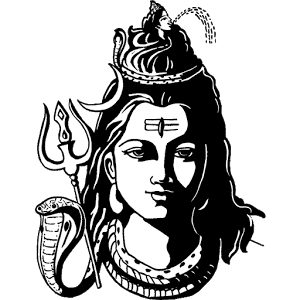
Other Lord Shiva Articles You May Like

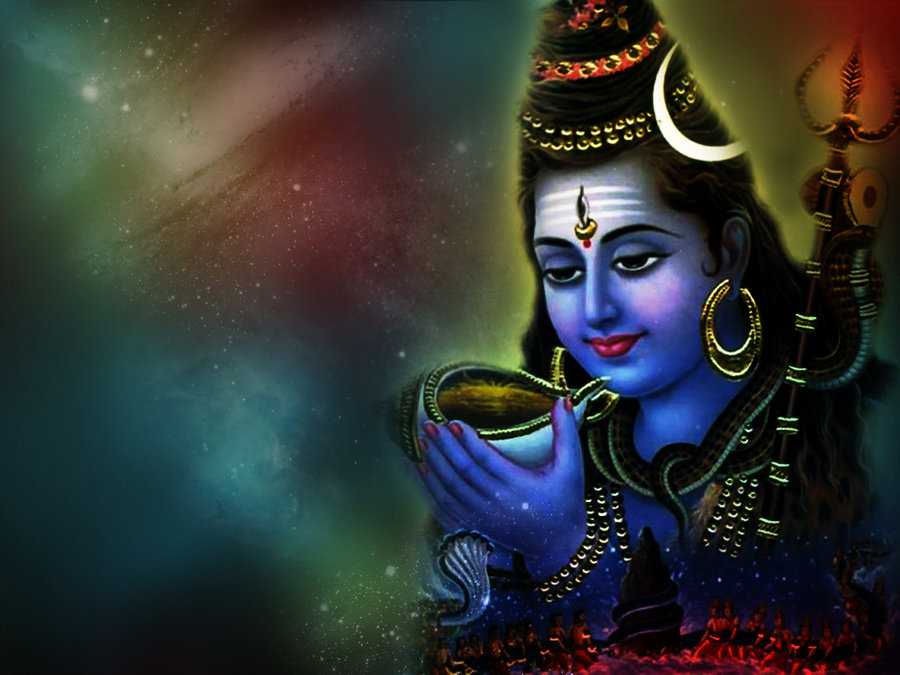
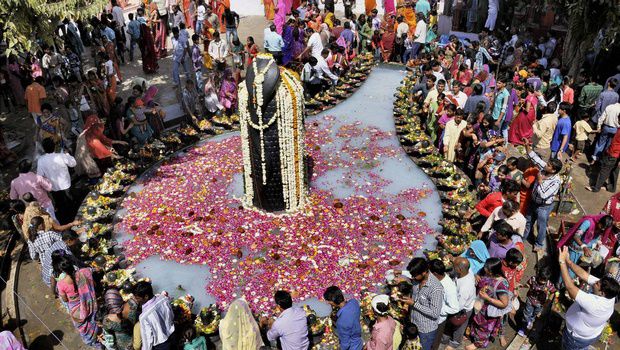





Lord Shiva is always seen with the Trishul. There is something enlightening about TRISHUL. It defies human logic, yet there is a enigmatic & magnetic gravitation. It is resplendent.
Lord Shiva’s trishul-astra, or trident, has come to be associated with numerous triad attributes. Held in Shiva’s right hand, it represents the three gunas. The three prongs represent the three shaktis of Shiva: iccha (will), jnana (knowledge), and kriya (action). Trishul’s points also symbolize three aspects of Shiva: paramashiva, parashakti (paranada or shiva-tattva) and parabindu (parameshvara or shakti-tattva).
Shiva is known as the Lord of Omkara (Omkareshvara), thus in transcendental sound, the three points of trishul-astra are associated with the three syllables of Omkara: A (akara), U (ukara) and M (makara).